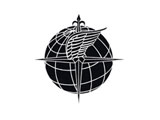 Air traffic controllers will begin using satellite technology in December to track aircraft flying over the Gulf of Mexico, a significant milestone in the government’s program to replace the nation’s radar-based air traffic system, Transportation Secretary Ray LaHood said Monday.
Air traffic controllers will begin using satellite technology in December to track aircraft flying over the Gulf of Mexico, a significant milestone in the government’s program to replace the nation’s radar-based air traffic system, Transportation Secretary Ray LaHood said Monday.
The most immediate beneficiaries will be airliners flying from the southern United States to South America, which will be able to take off more frequently and fly closer together, and helicopters servicing about 9,000 oil rigs in the Gulf, which should be able to fly more direct routes and be less limited by poor weather.
The new technology will be used in a 240,000-square mile area of the Gulf. Radar coverage extends only about 150 miles from shore, so aircraft flying over the Gulf — or any large body of water — aren’t covered. As a safety precaution, controllers are required to keep 100 square miles around each plane free of other aircraft. To do this, they stagger planes leaving the continental U.S. by ten minutes, an inefficient system that dates back to World War II.
Likewise, helicopters, which service Gulf oil platforms with an estimated 5,000 to 9,000 daily takeoffs and landings, must be able to see other aircraft. That limits their ability fly in poor weather.
The satellite-based surveillance will give controllers the ability to see aircraft over water just as they do over land using radar.
The Federal Aviation Administration plans to deploy the system nationwide by 2013, although aircraft won’t have to install the cockpit equipment needed to take advantage of the new system until 2020. Ultimately, the system — known as NextGen — is expected to save the airline industry billions of dollars every year in time and fuel, as well as cut pollution and greenhouse gas emissions.
The system “is one of the biggest steps in technology our generation is going to see,” said FAA Administrator Randy Babbitt, who joined LaHood at a news conference.
Airlines, who have been especially hard hit by the economic downturn, are seeking help paying for the estimated billions of dollars it will cost to install new equipment.
“Congress and FAA should make this program a priority by creating the necessary financial incentives for accelerated deployment,” said David Castelveter, a spokesman for the Air Transport Association, which represents major airlines.
LaHood said the administration is working with the industry to find a solution.


